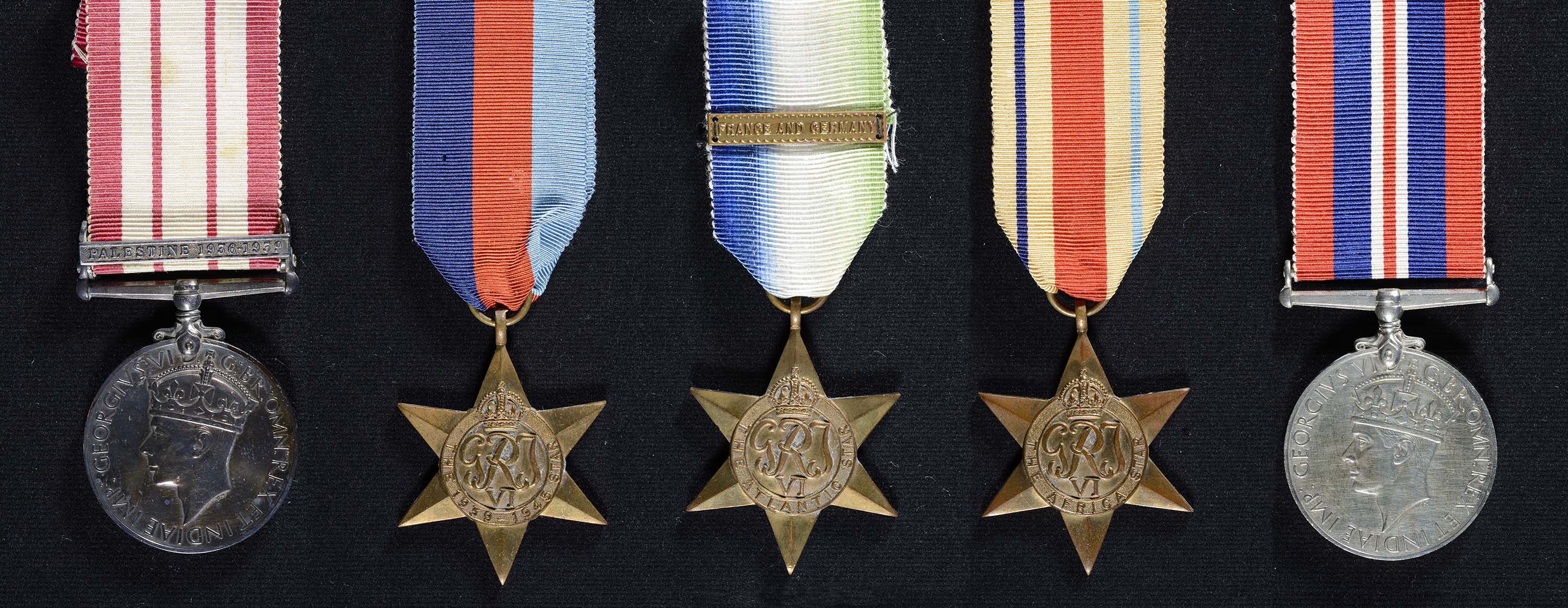

Display No. 7E
COURTNEY, Robert William
Robert Courtney joined the Royal Navy in December 1931 as a Stoker 2nd Class, training in HMS Victory II. His early service period saw him serving in various shore establishments and ships including HM Ships Victory, Warspite, Excellent, and Despatch.
At the outbreak of the Second World War, Courtney was serving in HMS Vincent before being posted to HMS Fiji. The ship took part in the Battle of Crete and was severely damaged resulting in an abandon ship being ordered. After this Courtney returned to the United Kingdom before serving in the minesweepers HM Ships Bayfield and Fort York. In 1944 he was on board HMS Halsted which was transferring to the Royal Navy from the United States when it was torpedoed and damaged beyond repair. He was posted to the aircraft carrier HMS Colossus which was sent to Asia to occupy Hong Kong and Shanghai. From May 1945, Courtney appears to have spent the rest of the war based in shore establishments at Alexandria, Egypt and was discharged from the Royal Navy at the end of the year.
In 1948 Courtney was recruited into the Royal New Zealand Navy on a short term basis to make up for a shortage of suitably qualified ratings to man the Loch-class frigates then entering service. He served at sea in HMNZ Ships Taupo and Bellona as a Petty Officer Stoker Mechanician. He then served in HMNZS Tamaki and Philomel before retiring from the Navy in October 1951.
Awarded medal(s)
Medal Description [Left to Right]:
The Naval General Service Medal 1915-1962
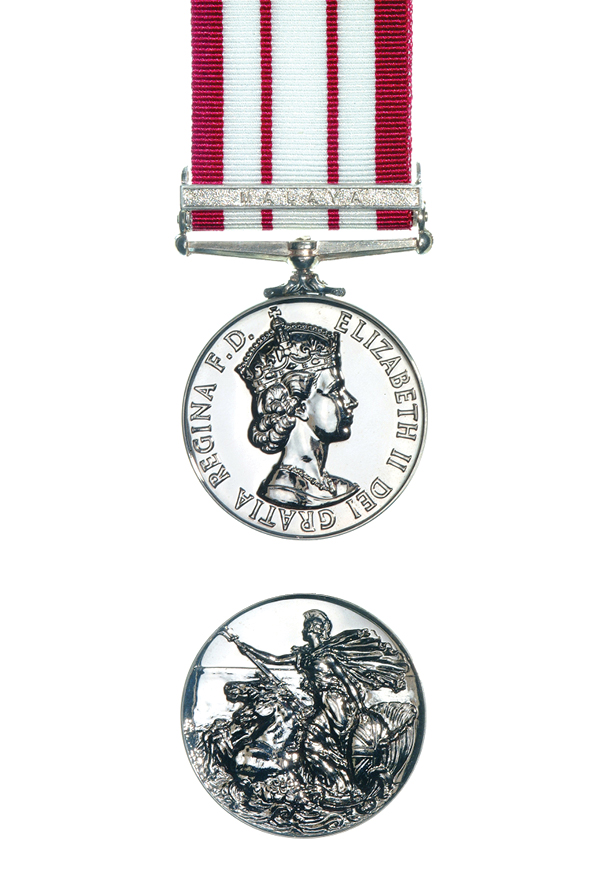
The Naval General Service Medal (NGSM) 1915-1962, was instituted in 1915 to recognise service in minor naval operations for which no separate medal was intended. They were always issued with a clasp for the specific area of operation. A total of seventeen clasps were awarded. Examples in our collection include the ‘Persian Gulf 1909-14’ clasp for operations against gun-runners; the ‘Palestine 1936-39’ and ‘Palestine 1945-48’ clasps which were issued for service in the pre-war Arab uprising and post-war Jewish insurgency; the ‘Minesweeping 1945-51’ clasp which was awarded for six months minesweeping service afloat; the ‘Malaya’ clasp recognising the service of naval personnel, including the Royal New Zealand Navy, during the Malayan Emergency of 1948-1960; and the ‘Yangtze 1949’ clasp for those on HMS Amethyst and other vessels attacked by Communist Chinese forces.
The 1939-1945 Star
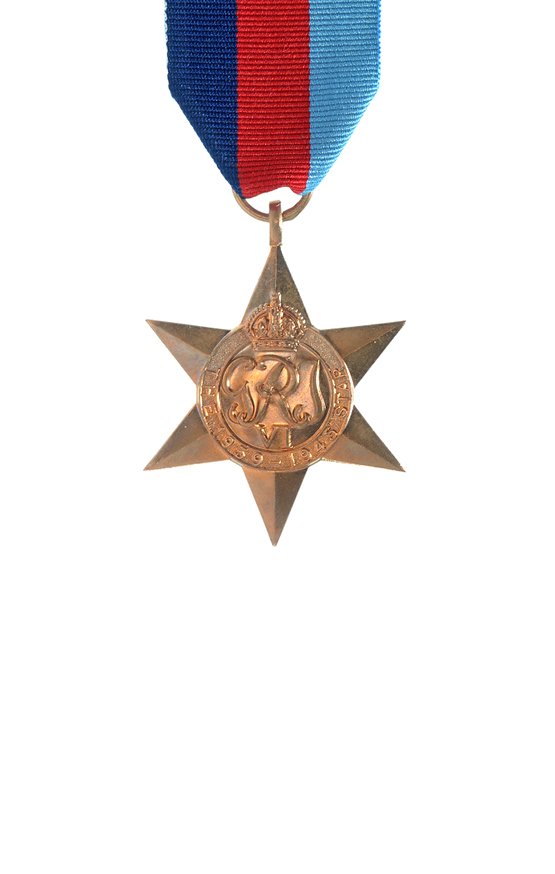
The 1939-45 Star is the first in a series of eight campaign stars instituted in 1945 to recognise service in World War Two. The ribbon has three equal vertical stripes of dark blue, red and light blue. The dark blue stripe symbolises the service of the Navy and the Merchant Navy, the red stripe symbolises the service of the Army, and the light blue stripe symbolises the service of the Air Force. The equal width bands represent the equal contributions of the three service arms towards victory. The ribbon was devised by King George VI. Two clasps could be awarded with this medal: ‘Battle of Britain’ and ‘Bomber Command’. Only aircrew would qualify for these clasps although a small number of Fleet Air Arm naval pilots flew for the air force and would be eligible for the ‘Battle of Britain’ clasp.
The Atlantic Star
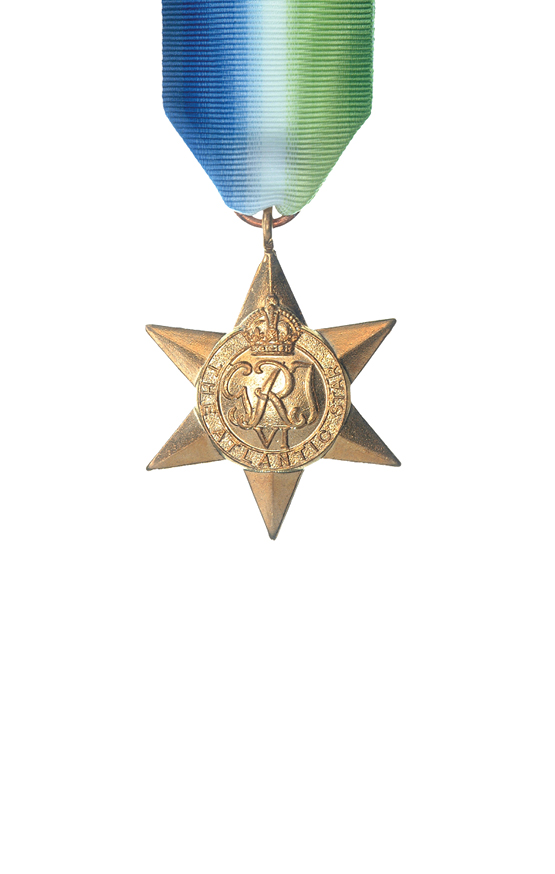
The Atlantic Star was awarded for service during the Second World War. It was instituted to commemorate the Battle of the Atlantic the longest continuous military campaign in the Second World War running from 3 September, 1939 – 8 May, 1945. Six months naval service or four months air service in the Atlantic, United Kingdom (‘home’) waters or North Russian waters was normally required. The ribbon is watered silk coloured blue, white and green, symbolising service in the oceans. Two clasps could be awarded with this medal: ‘France and Germany’ and ‘Air Crew Europe’. Personnel issued the Atlantic Star who then qualified for either the France and Germany and the Air Crew Europe Stars were awarded a clasp in respect of the second only (as only one clasp could be worn on the star).
The Africa Star
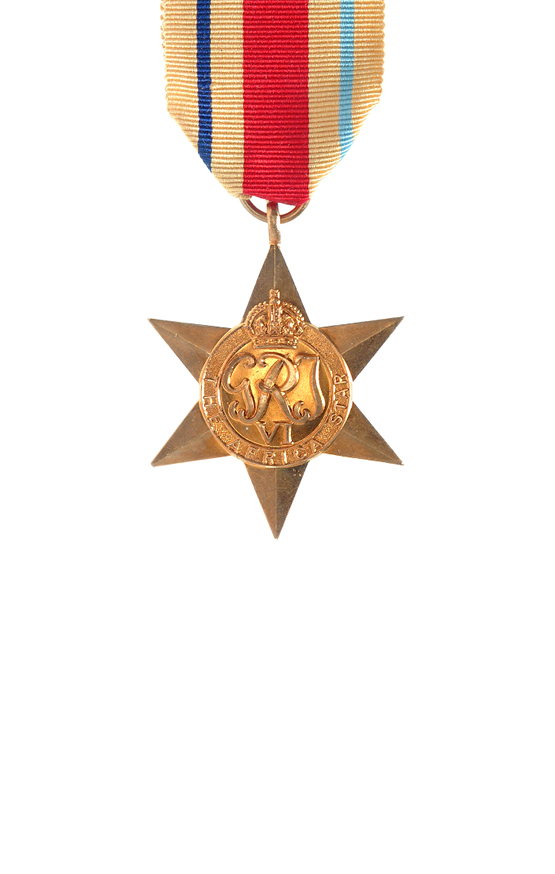
The Africa Star was awarded in the Second World War for service in North Africa between 10 June 1940 and 12 May 1943. The ribbon is pale buff in colour, with a central vertical red stripe, and narrower stripes, one dark blue and the other light blue. The pale buff background symbolises the desert, the central red stripe symbolises the Army, the dark blue stripe symbolises the Navy and Merchant Navy, and the light blue stripe symbolises the Air Force. Three clasps could be awarded with this medal: ‘North Africa 1942-43’, ‘8th Army’, and ‘1st Army’. Naval personnel could only qualify for the ‘North Africa 1942-43’ clasp – for in shore service.
The War Medal 1939-1945
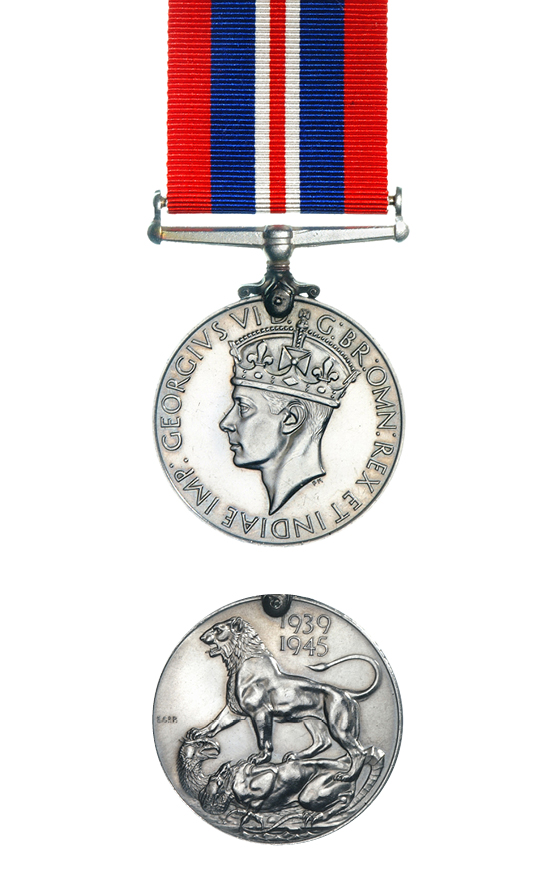
The War Medal 1939-45 was awarded across the British Commonwealth to all full-time members of the Armed Forces in the Second World War for 28 days service between 3 September 1939 and 2 September 1945, irrespective of where they were serving. The ribbon is the red, white, and blue of the (British) Union Flag. There is a narrow central red stripe with a narrow white stripe on either side. There are broad red stripes at either edge, the two intervening stripes being blue.
A bronze oak leaf on the medal ribbon denotes that the recipient was Mentioned in Despatches. To be Mentioned in Despatches a member of the armed forces had their name mentioned in an official report, written by a superior officer, and sent to a higher command. The report would describe the individual’s gallant or meritorious action in the face of the enemy.

